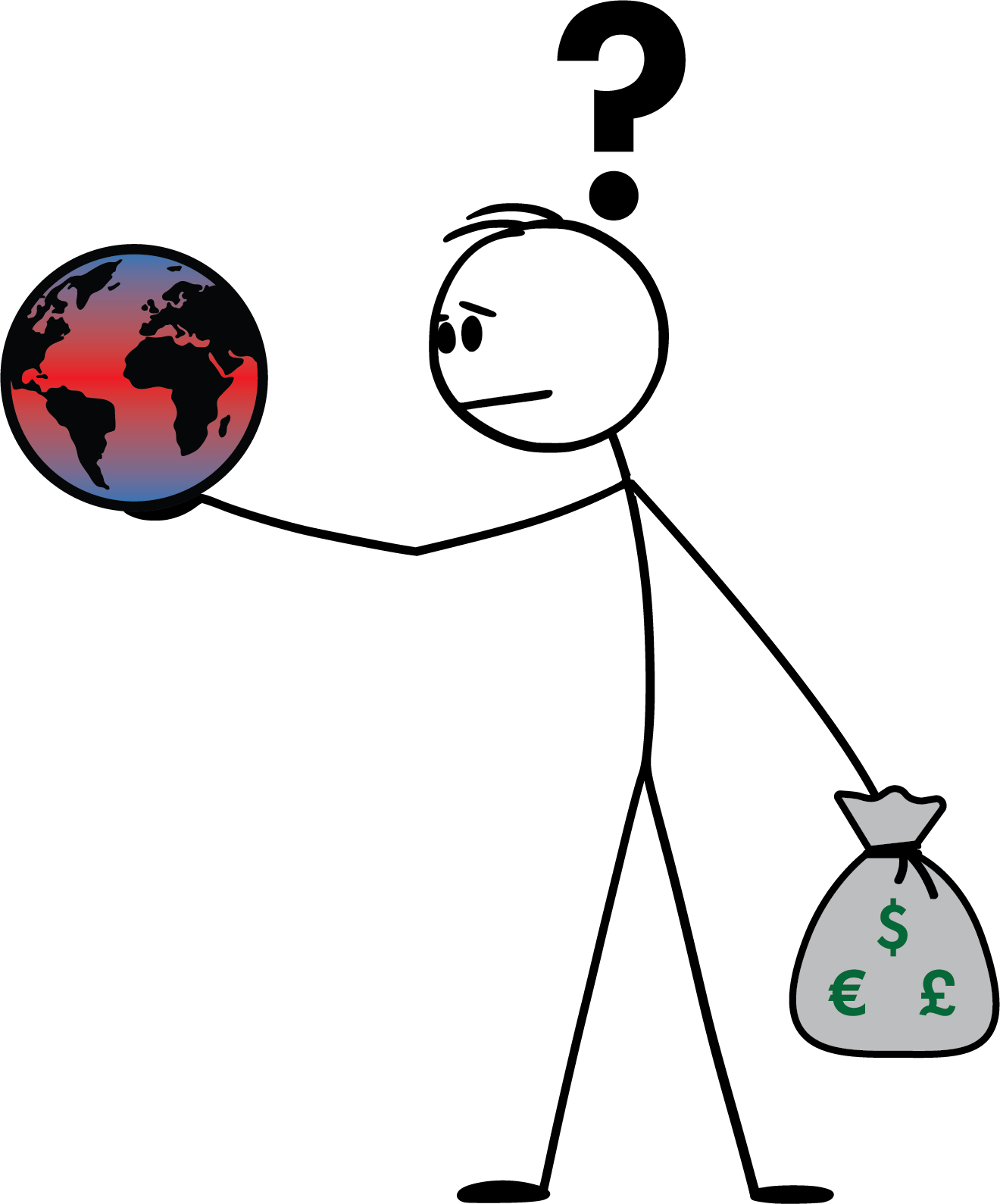Is it not a tragedy that humanity has so far been unable to curb its greenhouse gas emissions? If we are to mitigate global warming and meet our climate goals, we need to put an end to our paralysis of action, and demand more financial and regulatory support for climate technologies. But will we be able to do it? That is the question…
Tragedy economics
Have you heard of “tragedy economics”? Probably not. The word formed in my head when I misread a PowerPoint slide during the 12th Trondheim CCS conference (TCCS-12) earlier this year.
The word was actually “trading economics”. But this misreading triggered a thought: isn’t humanity’s inability to curb greenhouse gas emissions at scale one of the main tragedies of our time?
A tragedy can be defined as “a serious drama with a sorrowful and disastrous conclusion”. A tragedy can make one sit back with the feeling: “Why on earth didn’t they act differently? What if they’d done this or that instead”. Is this what future generations will think about our time and the lack of real climate action? This led me to think of one of the most famous tragedies: Hamlet.
Time is out of joint
In case you’re not familiar with this Shakespeare play, here is a summary:
Before the play begins:
- Prince Hamlet’s father, the king of Denmark, has died.
- Hamlet’s uncle Claudius has married Hamlet’s mother, the queen, and become the new king of Denmark.
In the play:
- Hamlet’s father appears to Hamlet as a ghost, saying a) that he was murdered by Claudius and b) that Hamlet should kill Claudius in revenge.
- Hamlet hesitates, for quite some time time, before finally killing his uncle.
- The story ends in disaster, with most of the characters dead.
For me, Hamlet is about the consequences of indecision; had Hamlet acted sooner, the extent of the disaster would’ve been reduced, as fewer people would have died. But it’s also about the painful discovery that “time is out of joint”, and the equally painful realisation that it’s up to you to set it right.

Doubt, faith and knowledge
One of the reasons why Hamlet hesitates is that, for a long time, he is not sure whether he can trust the ghost or not. Today, we see people who do not believe, or choose not to believe, in climate science. Unlike the belief in ghosts however, science is based on methodical research that has been assessed and approved by other scientists before it is published.
Science-based knowledge tells us that we must act quickly and do what we can to reduce greenhouse gases in order to limit global warming. In their AR6 Synthesis Report: Climate Change 2023, the Intergovernmental Panel on Climate Change states with great certainty that “human activities, principally through emissions of greenhouse gases, have unequivocally caused global warming”.
CO2 and other greenhouse gases, such as methane and nitrous oxide, trap heat inside the atmosphere. In itself, this is not a bad thing; our atmosphere naturally contains some CO2 and without any greenhouse effect at all, Earth’s average temperature would be -18°C. Until the dawn of the industrial revolution in the late 1700s, the CO2 concentration in the atmosphere had been rather stable for the past 10,000 years (around 0.028%).
Our problem is the amount of greenhouse gas that human activity is releasing into the atmosphere, and the rate at which we’re doing it. The concentration of CO2 in the atmosphere is now approximately 0.042%, which is a 50% increase compared to pre-industrial times. The Earth’s average global surface temperature was 1.1°C warmer between 2011 and 2020 than it was between 1850 and 1900.
In 2015, the Paris Agreement set the goal of limiting global warming to well below 2°C, and preferably below 1.5°C. Recently, the United Nations Framework Convention on Climate Change published the Global Stocktake, which shows that we are not on track to achieve this goal.
The consequences of inertia
To me, there are clear parallels between Hamlet’s paralysis of action around killing his uncle and our paralysis of action around climate change. We know that the increased concentration of greenhouse gases in the atmosphere is man made, and that this results in higher temperatures and more changes to our planet’s climate. Despite this, we have yet to take quick and definite action to the extent needed.
We are beginning to see the consequences of this. This summer, we have witnessed new temperature records being set in several places, including southern Europe, the USA and Antarctica. In Norway and Sweden, Storm Hans caused heavy rainfall with extensive flooding, landslides, and major structural damage. There have also been extensive forest fires in Canada, Rhodes and Tenerife. Meteorologists link these events to global warming.
We already have the technology
It is not fair to say that nothing is happening, though. In addition to the 2015 Paris Agreement, many countries have set their own, national climate neutrality targets. In Europe, we have European climate plans and the EU Emission Trading System (ETS). The European Climate Law writes into law the EU’s goal for Europe’s economy and society to become climate-neutral by 2050.
We also have technologies that make it possible to reduce CO2 emissions by reducing or avoiding the use of fossil energy. We even know how to remove CO2 from the atmosphere, but the potential for this is limited, and does not negate the need to curb emissions from industry and energy. There has also been a lot of research and technology development in other areas, such as solar energy, wind power, batteries and other energy storage, and improved power transmission.
In the proposed Net-Zero Industry Act, the European Commission has identified eight priority technology areas that will contribute to achieving climate neutrality, including my own research field, CO2 capture and storage (CCS). The EU is also working on developing its first Industrial Carbon Management Strategy .
In order to achieve our climate goals, an estimated 550 million tonnes of CO2 must be captured and stored annually by 2050 in the EU. As part of this, it has been proposed that the EU must store a minimum of 50 million tonnes of CO2 per year by 2030. This is substantial, but at the same time not that much, considering that global energy-related CO2 emissions in 2022 were at an all-time high of 36.8 Gt (gigatonnes).
There has been a lot of CCS activity in recent years. For example, as part of the Longship initiative in Norway, CO2 capture is being installed at the Norcem cement plant in Brevik, and Hafslund Oslo Celsio’s Waste-to-Energy plant has received support for installing CO2 capture on site. The CO2 emissions captured here will be stored offshore as part of the Northern Lights project, which is currently developing CO2 storage capacity of 1.5 million tonnes per year, with the possibility of expanding to 5 million tonnes per year. Very recently, the Dutch Porthos project announced that its final investment decision has been made. The plan is to store 2.5 million tonnes of CO2 per year for 15 years.
In addition, several large CO2 capture projects have been granted partial funding from the EU’s Innovation Fund. Projects are being developed for CO2 storage – not only in Norway, but also in other countries around the North Sea.
However, with the exception of Longship and Porthos, we have not yet seen final investment decisions (FID) on CCS, even though many industry actors have developed good projects, and several projects appear to be close to FID. So why does the roll out of climate technologies not happen faster when we know it is urgent?
Political action is needed
This is where the second element of “tragedy economics” comes in. It is not a lack of technology and knowledge that is holding us back, but a lack of policies being translated into action. Consequently, it is a matter of economics: of costs and prioritising investments in businesses, states, regions and municipalities. Investors would like to have something in return to ensure their continued financial stability and avoid bankruptcy. If you invest in a project to produce coal, oil or gas, the result is a product that can be sold. If you invest in a CCS project, the end product is stored CO2. This is not a saleable product, but a long-term investment and service for the common good. While this ought to be more than a sufficient reason to invest in CCS, it is not viewed as attractive by investors, without financial and regulatory support.
Incredibly, fossil energy production still receives huge subsidies. The International Monetary Fund (IMF) estimates that the direct and indirect subsidies for fossil fuel amounted to seven trillion dollars in 2022.
I have lost count of the number of times I have heard representatives from industry say that they need long-term, predictable frameworks in order to be able to make investment decisions for solutions and technologies that radically cut CO2 emissions. For instance, in a report entitled Klimatiltak i Norge mot 2030 (“Climate measures in Norway towards 2030”) published in June 2023, the Norwegian Environment Agency notes that current policy systems do not trigger investments that result in a sufficient rollout of technologies for achieving significant emission reductions in Norway.
Is it not a tragedy that man-made economic models so far do not incentivise us to make radical emission cuts; that it is too expensive to actually take action at scale to slow down man-made climate change?
All the world’s a stage
Let us return to the argument that I presented at the beginning of this article: that Hamlet should’ve acted more quickly in order to avoid disaster. It could also be argued that all the deaths in the play could’ve been avoided, had Hamlet not acted at all. But Hamlet’s situation is untenable. He finds the actions and attitudes of the older generation downright disgusting. A few years ago, we also saw young people protesting the lack of climate action. This year, on the other hand, there have been news stories that young people’s involvement has turned into climate apathy, as their protests have only been met with “words, words, words” (to quote Hamlet).
Even though William Shakespeare was writing approximately 400 years ago, he captured universal traits of man that are still relevant today. It is difficult to imagine the world in 400 years’ time, but what about 50 or 100 years? How will we look back on the times we’re living in now, and humanity’s inability to make decisions needed to set things right and protect the climate, despite all the knowledge we have?
In another of Shakespeare’s plays, As You Like It, he wrote that “all the world’s a stage, and all the men and women merely players”. Now is the time to decide if the play of global warming is going to end in tragedy. It doesn’t have to, does it?









Comments
No comments yet. Be the first to comment!